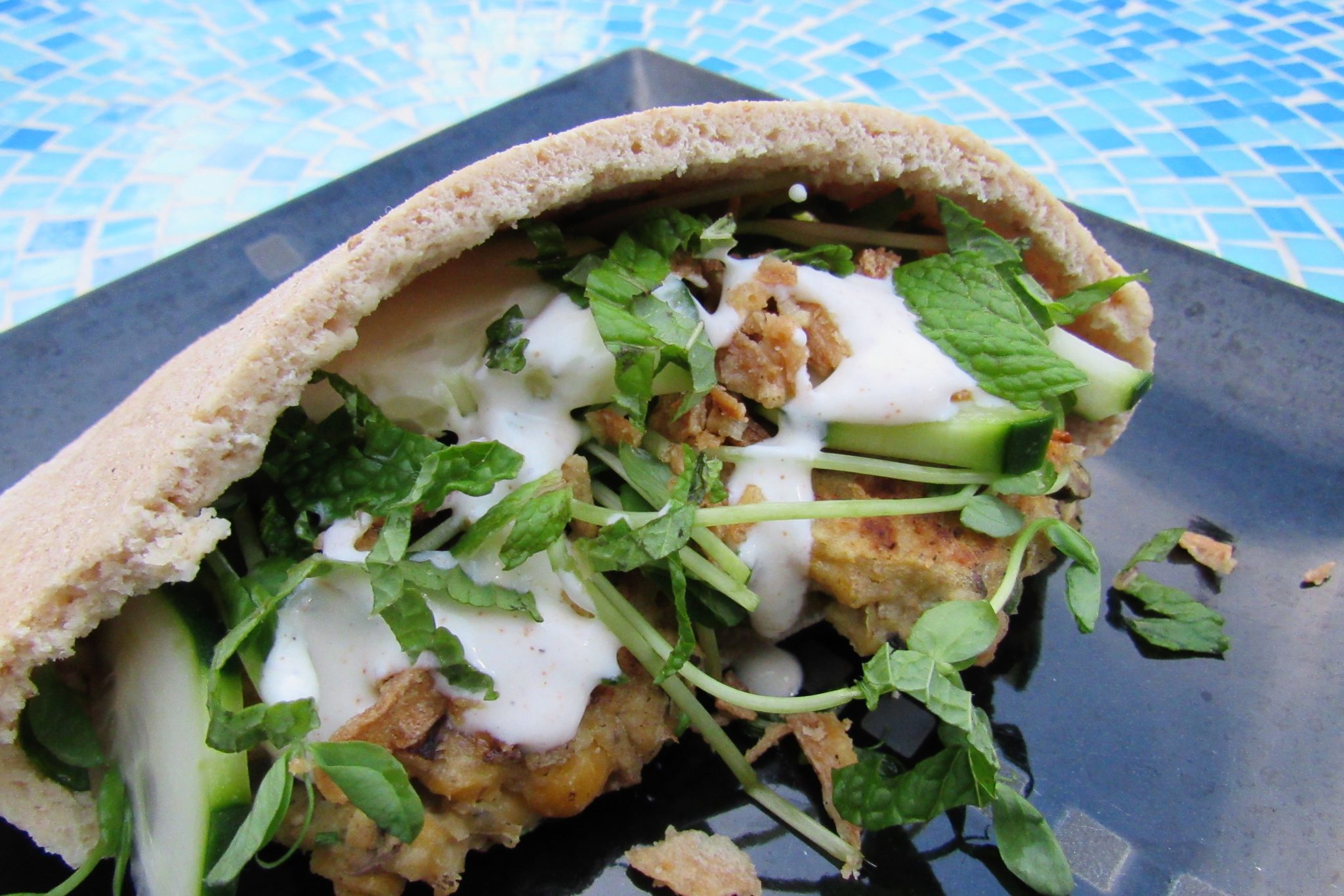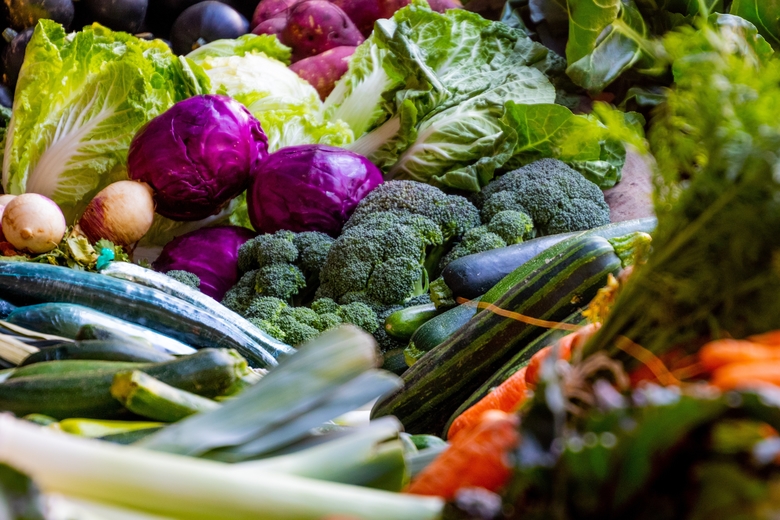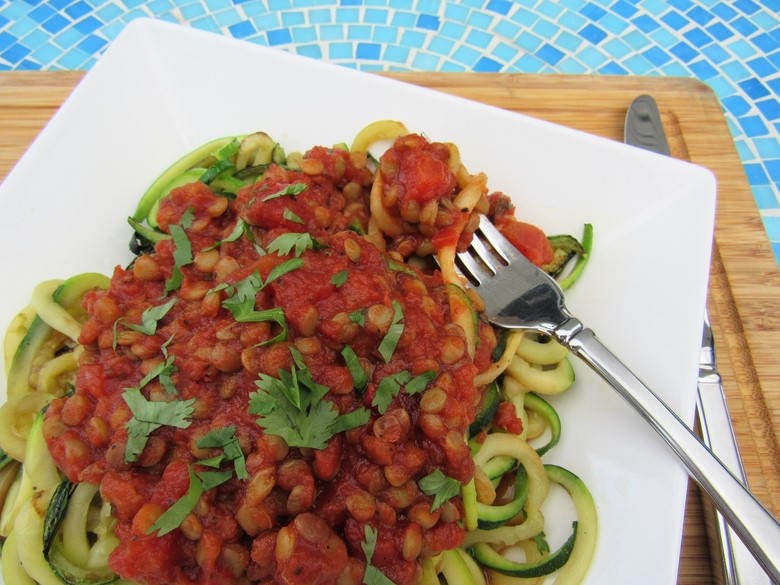Creamy mocha overnight oats are chocolaty, sweet and taste indulgent. With only 5 ingredients and less than 5 minutes, you can whip up a nourishing breakfast or snack that will fuel your body and satisfy your hunger. Grab a spoon- this easy recipe will excite your taste buds any time of day! Read more
De-escalating Meal Time Drama Around Kids & Food

“That’s yucky!”
“Eww!”
“I don’t like that!”
Kid comments like these are often followed up with whining and begging for favorite foods. And these negative food experiences are enough to make any parent exasperated. Once the whining wears you down, the idea of giving up and giving in, just to stop the chaotic noise and make the food experience a little bit better is totally understandable.
But it doesn’t really solve the problem, does it?
Temporarily- yes. But I think every parent and caregiver knows to expect that in about 4 more hours, the same scenario is going to happen. Again.
We all intuitively know that giving in to our child’s food demands is giving him control. In those moments of tension every mom and dad is trying to decide exactly how to proceed, like a pawn in a chess match. What move should I make that will be the best?
Make the wrong move and accept defeat.
The problem is, there is literally a split second to figure out our response. And let’s be real. Response is the kind word. For most of us, we are reacting. But we don’t have to continue this cycle of reacting.

Reacting escalates the emotional tension. Things can easily go from bad to worse simply from a comment, exclamation, or even a facial expression. Once the dinner table wrestling match begins, it feels impossible to escape unruffled.
If you are tired of hearing discontent at the dinner table…
If you dread meal time, knowing that whining about the meal is about to begin…
If you feel stuck in how to respond so you react less and respond more…
Here are 3 tricks to reduce the meal time whining and get rid of your short order cook hat- once and for all.

Change the Language
“Yuck!” is a common expression, but it’s not a good one. This exclamation is similar to a curse word- it doesn’t really say anything. It doesn’t express a feeling or why something is distasteful. Does the child not like the flavor? The mouth-feel? The scent wafting up to her nose? Often, this word is spoken before it has even touched their tongue.
Words like these often escalate parents’ emotions, making them feel frustrated when their child won’t even consider eating the food that they spent time and money preparing. Without even realizing it, anger can begin building, and this often fuels our reaction to our children.
Instead of allowing these undescriptive words and phrases at the dinner table, you can change the language. Begin to notice what negative exclamations your child says. Notice the ones that feel like nails on a chalkboard. Observe what words make you feel disrespected. What words show ungratefulness? Once you have noticed these words, have a conversation with your kids, even with your very young kids. Let them know that these expressions are not good forms of communication and that we are going to learn some better ways to express our likes and dislikes around food.
I have a good friend, Andrea, who is a teacher. She teaches her kids to become ‘scientists’. When they are trying something new, she reminds them to put on their science hat and begins asking them questions about the food. Is it crunchy? What does it look like up close? Is is rough or smooth? Does it smell sweet? By engaging her kids in the process of exploring an unfamiliar food, it takes away some of the pressure and helps them develop curiosity.
It is also okay to teach our kids what respect looks like at the dinner table. Respect isn’t eating foods begrudgingly or with a bad attitude. No one has to eat anything. I am responsible for what goes in my body and my child is responsible for hers. But respect is the combination of an attitude of kindness and actions that follow suit. You may even want to role play with your kids what respect would look like if they were at a friends’ house and they were served a food they did not prefer. Give them actual language on how they could respond.
This can be very simple! Don’t complicate this for your kids.
“No thank you. I don’t want any on my plate.”
This new language has to be reinforced a lot. Every time you notice negative language, kindly remind your child how we say it and have him practice that. Remember that if you get irritated and raise the temperature in the room, your child will follow suit. Don’t allow their attitude or child-like comments to get under your skin. I know it can be difficult- but you really can do this.

Offer an Option- Get Some Buy-In From Your Child
I am not always in the mood for broccoli. Only rarely do I want to eat pot roast. Kids have food opinions just like adults. To expect them to always want to eat the same foods as we do on that day is ridiculous.
But to give them full control to choose their food isn’t smart either. Doing so might mean your child wants to eat chicken nuggets and french fries for the next 12 weeks!
Mom & dad are responsible for setting the menu. They know how to balance protein, fiber rich carbohydrates, veggies, fruit and healthy fats. Kids don’t know how to do this- yet.
If you child appears to have some opinions about what he or she wants to eat, then begin giving 1 choice- but you design the question.
Would you like seasoned green beans or parmesan roasted carrots for dinner?
Would you prefer strawberries or sliced watermelon with dinner?
Giving an option A and B allows them to have a say but you have structured the meal to ensure it is balanced and nourishing.
Some kids will think it’s fun to have an opportunity to choose. Others won’t care much either way and still other kids may respond with an attitude because they aren’t given a choice to eat their favorite food. But giving kids a small part in the decision invites them into the process, even if they decide to pass. You can remind them later (only if needed) that they had an opportunity to share their opinion about that part of the meal.
If your child is asking for a meal (like pizza) and it is not pizza night, then kindly respond that you will add that to an upcoming meal plan. Remember that it is important that adults follow through when they say this. Don’t simply patronize them with a response if you have no intention of making this meal. And, when you do plan it, remind your child that they asked for it and you followed through on your word. This shows them that you are kind, their opinions matter and that respectful talk is rewarded with actions.

Always Provide 2 Foods Your Child Likes at Meals
While teaching your kids language to use when they don’t want to eat a food is incredibly helpful, it is also necessary to provide at least 2 foods that they are very likely to eat at each meal. If someone brought me unfamiliar foods 3 times per day, every day for a week I certainly wouldn’t like it. When we are constantly setting unfamiliar foods in front of our kids, it is understandable for them to give some push-back.
You can minimize negative comments by always including at least 2 foods that your kids will likely eat. This shows that you notice their food preferences and care about them having an enjoyable mealtime experience. But is also demonstrates that you don’t do special orders and you aren’t a short-order-cook.
It feels so easy to grab the bread and make a PB&J on the night you know your child isn’t going to want to eat the meal. But every time we do that, we reinforce this idea that they can request a different meal when something feels or looks scary or uncertain to them. We can’t ever expect to raise adventurous eaters if we always give them ‘safe foods.’ But we do have to serve enough ‘safe’ foods so that they know they don’t ever have to leave the dinner table hungry.

For example, on fish taco night. You might serve broiled fish, slaw, corn tortillas, salsa, yogurt for topping the tacos and a bowl of berries. Your child may choose to have some of the yogurt and berries together and also eat a corn tortilla by itself. In this instance, you aren’t making any extra meals but you also were strategic in your planning to ensure that you child had some options to eat that were nourishing.
Remember that kids can decline food. It’s okay. If you are concerned about their nutritional intake, talk with a Registered Dietitian. Remember that kids eat 3 meals per day along with 1-2 snacks so as the parent, you have 4-5 meals each day to help them meet their nutritional needs. Don’t stress out about 1 meal.
A parenting expert once said that the adults are like a thermometer. We set the temperature at meal time. We determine if the tension escalates or if we stay in the neutral zone.
If you have dinnertime struggles with your kids then you are human. But don’t allow this tricky time to usurp your authority and confidence.
It’s going to take some practice. But, You’ve Got This… and these are 3 steps to get you started.

Test Your Chocolate IQ: What Do You Know AND What Should You Know?
Chocolate has earned the title “health food” in the last decade. But like wine, coconut butter, almond flour and so many foods in the health and fitness world that are celebrated for their nutritional benefits, how healthy is it really and how much should you eat?

Test your chocolate knowledge and find out what you know and what you need to know to make the best choices for your body.
01. All chocolate comes from cacao beans which after harvesting, are fermented for several days before being sent to plants for processing into chocolate.

TRUE
Cacoa beans are actually seeds from the fruit of a Theobroma Cacao tree. After picking, these seeds are allowed to ferment for 5-7 days and then dried and shipped for processing. The combination of drying, roasting and fermenting the seeds helps reduce the bitter flavanol levels. Artisan chocolatiers would say that fermentation may be one of the most critical steps because it helps develop the rich, buttery flavor and significantly meld the astringent tannins. Otherwise, chocolate just wouldn’t have it’s decadent appeal.
02. You must buy 80% or higher cocoa in order to get the health benefits of dark chocolate.

FALSE
Dark chocolate by definition is 70-99% cocoa solids. While it is true that the anti-inflammatory flavanols increase with the percentage of cocoa solids, so does the astringent or bitter flavor. Choose dark chocolate with at least 70% but don’t worry if you can’t handle 85% bitter-sweet chocolate.
White chocolate does NOT contain cocoa solids and only includes cocoa butter, sugar, milk solids and vanilla flavoring. Some brands don’t even contain cocoa butter- just vegetable oil and sugar!! Due to the lack of cocoa solids, white chocolate is void of the beneficial antioxidants. It also does not contain iron, magnesium, copper or zinc, as in it’s dark chocolate cousin.
03. Dark chocolate may improve blood flow and reduce blood pressure.

TRUE
Many studies have shown that chocolate and chocolate products may have a beneficial effect on blood pressure, similar to that of lifestyle changes like exercise. However, one 18-week study of hypertensive and pre-hypertensive individuals showed that as little as 30 calories of dark chocolate had a beneficial effect, lowering systolic BP (top number) by 3 points and diastolic BP by 2 points (bottom number).
04. Milk helps you absorb the antioxidants in chocolate.

FALSE
Milk and dairy actually bind to antioxidants in chocolate making them unavailable. Therefore, milk chocolate is not a good source of beneficial antioxidants.
05. Chocolate cravings indicate that your body needs nutrients within the chocolate.

MAYBE
The research is still unclear whether cravings indicate a physiological need or a psychological response. This means that it is possible that your body is desiring nutrients in the particular food OR it could be related to an emotional or mental attachment.
For example, when you are sick, you probably crave your mom’s famous chicken soup. Or, when you walk into your grandma’s house, you may crave her home-baked cookies. Or, when you walk into a movie theater, you may not be able to sit down until you have a tub of buttery popcorn in your hands.
Cravings can also be related to low blood sugars, when you are needing some energy. Your body may begin craving sugar, the quickest source of energy for a “pick-me-up”. It may have nothing to do with the beneficial nutrients in chocolate like iron, magnesium or copper. Instead, it may be the food you think of when your body wants an energy boost.
Don’t be deceived! Chocolate is not the bad guy but it is also not the answer.
- IF your body needs energy, you can choose a healthy snack like a piece of fruit and nuts (lots more snack ideas here)
- IF your body needs some iron, you can make a pot of chili (this is our favorite) with iron rich beans and beef and vitamin c from the tomatoes to help you absorb the iron even better.
- IF your body needs magnesium, you can get double (20%) in 1 ounce of almonds for the same calories as in chocolate.
- IF your body needs a dose of copper, include some copper rich foods into your usual diet like sunflower seeds, lentils and almonds.
If your mind can’t get chocolate off the brain, eat a small square and enjoy thoroughly.
06. Dark chocolate only complements red wine.

FALSE
While a rich red wine tends to be the ideal option for luscious dark chocolate, white wine is not an automatic fail. There are a few exceptions. Pairing wine and chocolate sounds romantically delicious, but there are a few guidelines to follow to make sure one doesn’t blow away the flavors of the other. Here is what you should consider:
- The sweetness and/or fruitiness of the wine needs to match that of the chocolate. If the chocolate is sweeter, the wine will seem dull or bitter.
- Pair based on the darkness of the chocolate. Look for intense, fruity reds (or whites) for darker chocolates.
- Experiment A LOT! Sometimes it takes some wrongs to end up at a right!
07. A dose of chocolate will give you a caffeine boost.

MAYBE…
…depends on your sensitivity to caffeine. If eating chocolate in small quantities of 1 ounce portions, it is unlikely that you will get the “boost” you are expecting. This portion only contains 23 mg caffeine which is one quarter of a typical 8oz cup of brewed coffee. If you do find that after eating chocolate you feel a surge of energy, it is likely due to the sugar.
08. Chocolate will put you in the mood…

UMM…
Well, the jury is still out as to whether chocolate is the aphrodisiac like the fanciful myths claim (you may have your own opinions!) but here is what we do know…
Chocolate can improve mood by boosting brain endorphins (natural opiates) and serotonin. There is a reason people reach for chocolate when they are in a bad mood! But no amount of chocolate will solve our problems or eliminate our stress, so make sure you don’t regret your chocolate splurge after the fact.
09. You should eat a little bit of dark chocolate every single day.

TRUE…
…At least according to the University of Michigan, Department of Integrative Medicine. Dark chocolate is included as a part of the Healing Foods Pyramid “as a part of a balanced, whole foods, plant-based diet. This Food Pyramid emphasizes foods that nourish the body, sustain energy over time, contain healing qualities and essential nutrients, and support a sustainable environment.”
They give 9 health benefits, although most of us would be satisfied with just 2 or 3. BUT, they do emphasize limiting to a 1 ounce portion. The key is making this treat fit into your eating pattern so that it is not adding more calories, sugar and fat than your body needs to maintain your goals.
So, if you needed a reason to eat it, wanted permission to take a bite, or were longing for a guilt-free pleasure, eat an ounce each day as a part of YOUR healthy diet.
TRUTH: And above all these put on love, which binds everything together in perfect harmony. –Colossians 3:14 (ESV)
REFERENCES
- Amano Artisan Chocolate
- USDA National Nutrient Database: Dark Chocolate
- Cornell University: Chocolate, Food of the Gods
- Today’s Dietitian: Mining the Riches of Dark Chocolate
EDITOR’S NOTE: The article was originally posted in February 2017 and updated in February 2019 for accuracy.
‘Everything’ White Bean Dip
This simple and creamy ‘Everything’ White Bean Dip is easy to make and packed with flavor for afternoon snacking. With only 5 minutes, a few ingredients and a food processor, you can have a nutrient dense snack that is a crowd pleaser!

While there is no shame in having a hummus ‘standby’ on hand, anyone can become a white bean dip master by combining a few ingredients that are probably already in your pantry and fridge.
Delicious doesn’t need to be daunting!
Why is this a ‘white bean dip’ and not hummus? Traditional hummus has tanhini, which is ground up sesame seeds. This adds a tasty and unique flavor to hummus. But if you don’t have that sitting in your pantry or fridge almond butter is a fantastic alternative, as you will find in this recipe. It adds a faint nutty flavor without overpowering the dip.
Another slight modification is type of beans used. Hummus traditionally uses chickpeas but this recipe uses creamy Great Northern Beans (cannellini beans would work well too!). This makes it a little bit easier to get a nice, creamy dip without any lumps.
White bean dip is an excellent snack because it has a nice combination of healthy fats from the olive oil and almond butter, protein from with beans and nut butter, and fiber from the beans. The combination of these ingredients will satisfy you so hunger doesn’t come lurking before your next meal.
Often when we get derailed from our food plan, it’s because hunger is active and we don’t have ready-to-eat options available to us.
This creamy Everything White Bean Dip can be whipped up quickly on a weekday afternoon but if you are planning ahead, it is a great recipe to add to your meal prep. That way it is ready to go and available at any time of the day.
How else can you incorporate this dip into your meals?
- Spread on wraps (even lettuce wraps or tortillas) as a nourishing and flavorful condiment.
- Make a greek pizza by layering flatbread with hummus and greek salad components
- Stir into deviled egg filling
- ‘Dress’ pasta salad with hummus
The ‘Everything’ flavor comes from the wildly popular Trader Joe’s seasoning blend. Chances are you have this seasoning blend sitting on your spice rack or have been thinking about buying it and wondering how to use it. The ‘Everything’ seasoning blends great into dips but it is also amazing on a avocado toast with a fried egg as well as stirred into cooked grains or even sprinkled on chicken before baking.
Go skim your pantry and fridge for these few ingredients because this yummy dip is fail-proof and so very easy!

‘Everything’ White Bean Dip
Ingredients
- 15 oz can Great Northern Beans or Cannellini, rinsed & drained
- 2 tbsp lemon juice
- 2 tbsp unflavored almond milk or water not vanilla flavored
- 2 tbsp creamy almond butter or tahini
- 1 tbsp extra virgin olive oil
- 1 clove garlic crushed
- 1 tsp Everything seasoning I used Trader Joe’s brand
Instructions
- Combine all ingredients in food processor and blend for 30-60 seconds. Scrape down sides and blend again. Repeat again as needed. For a looser dip, add in additional olive oil or almond milk or water by the tablespoon until desired consistency.
Notes

Happy dipping!
Simple Meal Planning Strategies- Quick & Uncomplicated

If meal planning feels utterly overwhelming, you are not alone! We often avoid or put off doing what feels like an uphill battle that can’t be won. BUT, don’t accept defeat. These simple meal planning strategies will help you get organized, save time and feed your family well.
But first, you must believe that you can get better at this. There is a simple meal planning system that will work for you 75% of the time. And second, it’s time to get curious. Be willing to commit to a strategy for several weeks to see how it works for you and before you give up on that one.
Let’s get to it…
01. Set Aside 5 Minutes
No more wasted time pondering the question, ‘What’s for dinner?’ My 5-Minute Healthy Meal Plan Guide walks you through the right questions to ask yourself to help you make choices quickly and efficiently.
Paper meal planning is probably one of the most common strategies and it is easy, convenient, free and accessible. Grab and pen and notepad OR print off my easy guide so that you can get started today!
02. Embrace Technology… If You Want To
There’s an app for that- it’s a guarantee. If you want to use your phone, tablet or PC to create and manage your meal plan, there is a program that will do all that… and probably MORE.
First, figure out exactly what you want help with…
- Sharing recipe ideas?
- Telling you what to eat?
- Creating a grocery list?
- Saving money on meals?
- Sending you pre-prepped ingredients?
- Helping you work around food allergies?
Know exactly what you want a program to do for you before you choose one to make sure you are selecting an option that will help you with your obstacles. Costs will vary. Some apps are only a few dollars a month. But many meal kit delivery services range from $10-15 per meal.
Here are a few I have reviewed:

Sun Basket- Falafel Pita Pockets with Lemon Yogurt Sauce
03. Create a Master Meal List
Do you eat the same foods over and over? We were in that club many years ago and it was creating a lot of resentment. My husband highly disliked most fruits and vegetables making it very difficult to find new recipes he would eat. It felt like we ate the same 5ish meals each and every week… Again and again…
Once my pity party ended, I decided to take action and create a Master Meal List. After brainstorming every meal we both liked and writing them down on a small legal pad, I discovered we had a list of about 20 different meals (nearly 3 weeks of different recipes!).
While I had felt stuck, I wasn’t actually stuck- at least, not if I didn’t want to be. Creating a master meal list expanded our weekly options to create more variety without any new recipes.
04. Don’t Try Too Many New Recipes
New recipes are unfamiliar therefore they always take more time. Even the ‘quick’ ones will take longer because you have never gone through the process before and will need to recheck the recipe several times. New recipes are a great way to prevent boredom and increase variety, but if you plan too many or plan them on crazy days, they will only feel overwhelming.
Here are 4 tips for including new recipes into your meal plan:
- Don’t attempt more than 1 new recipe per week.
- Look for easy recipes that don’t require new skills.
- Avoid recipes with more than 1 unfamiliar ingredient.
- Look for quick recipes.
05. Amp Up the Nutrition in the Meals You Already Know How to Make
The easiest recipes are the ones you already know how to make and even better, the ones you have memorized. These are stuck in your muscle memory which can help you get them on the table faster and more efficiently. Before endeavoring to add lots of new recipes to your meal plan, begin by amping up the nutrition in the ones you know.
Ideas…
Add spinach or greens into sauces like tomato sauce, alfredo sauce, mac’n’cheese
Add purees (cauliflower, butternut squash) into casseroles, sauces, and pasta dishes
Add roasted veggies to wraps, pasta salad, egg dishes (quiche, scrambled eggs, omelets, frittatas)
Replace half of the pasta with spiralized veggies or black bean/lentil noodles
Replace half of all of the refined pasta, rice, grain, bread with sprouted grains, whole grains or legumes
Consider using healthier fats in the recipe like avocado, olive oil, nut butter or coconut oil
Zucchini Noodles with Lentil Marinara Sauce
06. Determine Your Plan ‘B’
Plan for your crazy days by having a go-to ‘Plan B’. This is an easy pick-up or easy prep meal that requires virtually no extra decision making and you can get on the dinner table in less than 20 minutes start to finish.
‘Plan B’ Ideas
- Rotisserie chicken, bag of salad, microwavable potatoes
- Quick Stir Fry with 1 bag each of stir fry vegetables, brown rice, edamame + a few tablespoons peanut/almond butter and low sodium soy sauce to stir in at the end (a few teaspoons of sesame oil takes this meal up a notch!)
- Pre-formed Veggie, chicken or turkey burgers on whole grain bun with sliced tomatoes and cucumbers
07. Save Time By Ordering Groceries Online
If time is never on your side, don’t give it away battling crowds and long lines at the grocery store. Take advantage of one of the many options to order groceries for pickup or delivery to your home. This is 1 service you MUST check out. And once you try it, you will join me and every other mom out there who says, “I don’t think I can ever go back.” Check out my Walmart Free Grocery Pickup Review.
08. Eat Seasonally to Save Money, Improve Variety
Produce in season is usually 50% less! This budget-friendly way of living allows you to enjoy what is fresh all year long without paying premiums on certain items. You can find out exactly what is in season in your area along with some tips on how to buy the best quality.

09. Simplify, Simplify, Simplify
There is no competition for who has the most complicated or Pinterest-worthy meal plan. The best meal plan is the one that has meals you want to eat and can make within your life schedule. Don’t plan to fail. PLAN TO SUCCEED.
10. Post the Meal Plan Each Week & Commit
Meal plans that we don’t follow are a waste of time. Put your meal plan in a visible place in your kitchen and glance at it each day. Make a note if you need to remove something from the freezer the night before or can chop an extra onion for a future meal. Direct family members to the meal plan when they ask what is for dinner or if they can help.
Don’t let meal planning stress you out. Believe that it can actually reduce stress, save time and help you manage your food budget.
Done is better than perfect- ALWAYS!
Healthy Parmesan Chicken Quinoa Bake
Packed with veggies and Italian flavor, this Healthy Parmesan Chicken Quinoa Bake combines nourishing ingredients in a comfort-food casserole.

Cauliflower rice is cooked with quinoa and herbs to create a flavorful base. An entire package of fresh spinach is stirred into the marinara kicking up the nutrition even more. With a nice balance of protein, fat and carbohydrate, this family-friendly veggie filled recipe is dietitian created and kid approved.
Sneak Veggies?
A lot of parents wonder if sneaking veggies into meals is a smart strategy to help their family eat more plants. While this may be effective helping them digest more nutrients in the short term, it doesn’t help them adapt their palate or have an adventurous spirit in the world of food. Using this as a primary method to help them eat more veggies doesn’t work as a long-term solution and may interfere with trust in the parent-child relationship.
However, this doesn’t mean you need to read off the ingredient list and have it approved by your child before making it. We have all eaten dozens of delicious meals at restaurants and gatherings not knowing exactly what was in it.
If you have kids that are a little finicky or even a spouse that is on the fence about some veggies, try thinking about making recipes where you can blend a food that is liked (familiar) with one that is not familiar.
In this recipe, a 12 ounce bag of frozen cauliflower rice is cooked along with quinoa making it almost undetectable once it is seasoned and covered with a bit of sauce and cheese. This might be a nice ‘first step’ for someone who is a little uncertain about cauliflower.
In addition, the marinara sauce is packed with an entire 5oz package of spinach that has been quickly wilted in a saute pan adding vitamins A and C, iron and more. This is an alternative recipe to green smoothies to help everyone in your family eat their greens!
Sometimes eating more veggies is all a matter of presentation and creativity. To be honest, our kids have done their fair share of declining veggies at the dinner table. We are not immune. But, this recipe was well accepted from both my 3 year old and 1 year old. AND my husband who would declare himself not a fan of many veggies thought this was delicious!
The presentation is lovely and perfectly suitable for guests but is also excellent for a weeknight meal. Read the Recipe Notes section for several tips on how to make this recipe easier and adapt it with what you have available. And for those who need it, this recipe is gluten-free.

Save Even More Time
Meal prep is every busy weeknight cook’s saving grace. There are many ways to save time making this recipe on a chaotic weeknight (All of these are tested and work great!):
- Make the entire recipe on your meal prep day and leave off the last step of cooking it in the oven. Cover with foil and refrigerate. On the day you wish to serve, place in the oven to rewarm.
- Cook the chicken in advance and have ready to pop into the recipe the night you are putting it together. The quinoa cauliflower mixture and the spinach marinara can both be made in advance on meal prep day so they are ready to add to the casserole the night you are serving it.
This Healthy Parmesan Chicken Quinoa Bake is a delicious way to help you and your family eat more veggies and get a healthy balance of protein, fat and carbohydrate. Enjoy!

Healthy Parmesan Chicken Quinoa Bake
Ingredients
- 1 ½ lbs chicken tenders
- 1 cup quinoa
- 2 cups low sodium chicken broth or vegetable broth
- 5 oz package baby spinach
- 12 oz package frozen riced cauliflower
- 25 oz jar marinara sauce
- 2 oz Parmesan cheese shredded (about ½ cup)
- 2 oz mozzarella cheese shredded (about ½ cup)
- 1 tbsp + 1 tsp avocado oil or preferred cooking oil
- 1 garlic clove minced
- 1.5 tsp dried oregano or Italian seasoning divided
- ¾ tsp garlic powder
- ½ tsp black pepper
- ¼ tsp kosher salt
Instructions
- Preheat oven to 350 degrees. Grease 9×13 pan with oil spray (I use a Misto).
- In a medium saucepan bring chicken broth to boil on high heat. Add in quinoa, bag of cauliflower rice and ¾ tsp dried oregano and bring back to a boil. Then turn down to low, add lid and allow to simmer for 15 minutes.
- Meanwhile, in a large non-stick skillet, heat 1 tbsp oil until it shimmers on medium heat. Season both sides of the chicken tenders with salt, pepper, garlic powder and ¾ tsp oregano. Cook chicken in skillet on both sides until fully cooked, about 10 minutes.
- While the chicken and quinoa are cooking, heat 1 tsp oil in a medium-sized pot on medium heat. Add in minced garlic and saute for 1 minute or until slightly golden on edges. Then stir in spinach by the handful and cook for about 3-4 minutes or until wilted. Pour in jar of marinara and simmer for 2-3 minutes on low to warm through.
- Once quinoa & cauliflower mixture is cooked, add half of the spinach marinara sauce and stir to combine. Then pour the quinoa mixture into the 9×13 pan and smooth out. Top with the chicken tenders and then pour on the rest of the sauce. Finally, top with the mozzarella and Parmesan cheese.
- Bake casserole for 15 minute or until cheese has melted. Serve warm.
Notes
- Chicken is fully cooked at 165 degrees. Use a meat thermometer to save you from overcooking it and wasting your time.
- A quick way to evenly season your chicken is to put all of the seasonings in a small ramekin or bowl; stir to combine and then sprinkle on top of chicken.
- Chicken breasts can be used in place of chicken tenders but will take longer to cook through. Cut chicken breasts in half to speed up cooking and use a meat thermometer to check it.
- Freshly shredded Parmesan cheese and mozzarella cheese will have a better flavor but pre-shredded will save you a few minutes- do what works for you!
- This recipe makes 6 generous portions OR 8 moderate portions. It can easily serve 8 people if serving along with side salad or side dish.
- Reduce sodium by using water or no salt added chicken broth instead of low sodium broth.
- Reduce sodium by using no added salt broth or water to cook quinoa and cauliflower.




